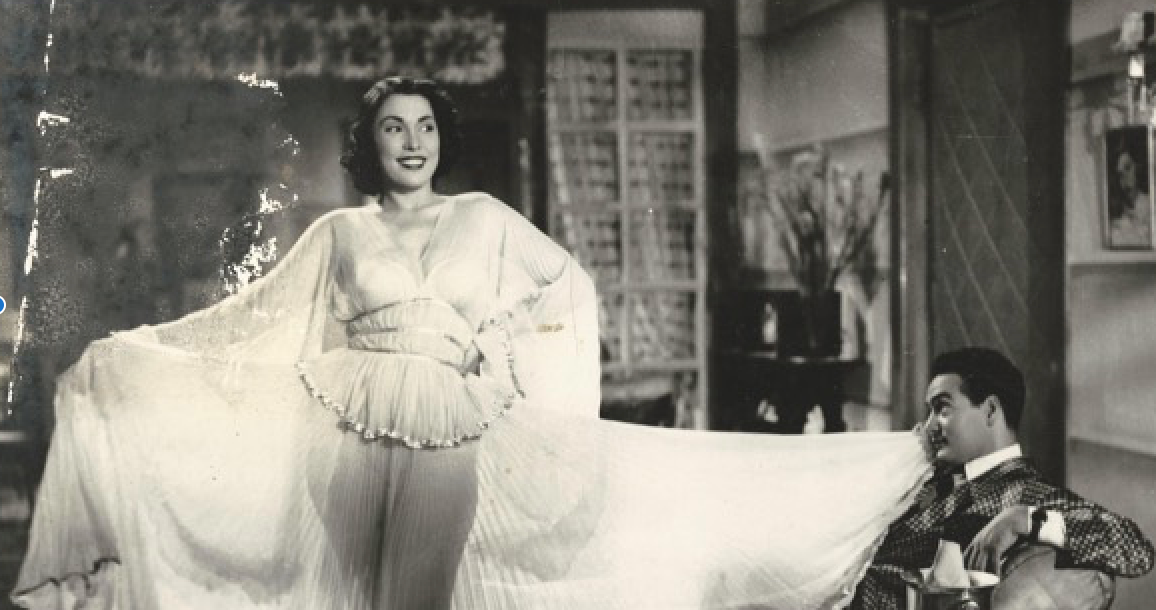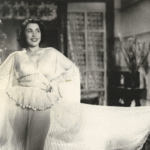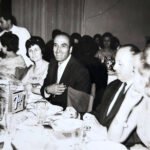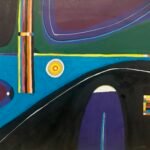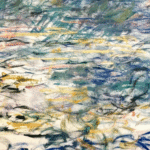An Article by DM (1022 words, 5 min. read)
On an October evening in Beirut, the Sursock Museum opened its doors to music, memory, and light. Under the high patronage of Lebanon’s Ministry of Culture, and in the presence of Dr. Ghassan Salamé, Lebanese Minister of Culture, and Mr. Jack Lang, President of the Arab World Institute in Paris and former French Minister of Culture, and Dr. Tarek Mitri, Deputy to Prime Minister Mr. Nawaf Salam and Chairman of the Board of Trustees of the Sursock Museum, the exhibition “ Diva: From Umm Kulthum to Fairouz to Dalida, Icons of Arab Art”, invites visitors into a world where art becomes immortality.
Born from the success of its earlier incarnations in Paris, Amsterdam, and Amman, this multimedia exhibition arrives in Beirut as both a homecoming and a celebration. It is a hymn to women who sang, acted, danced, and transformed the cultural face of the Arab world.

Voices That Shaped Generations
From Umm Kulthum’s commanding stage presence to Fairouz’s celestial stillness, from the allure of Asmahan to the bold grace of Sabah and Dalida, these women were not merely entertainers, they were architects of modern Arab identity.
Between Cairo and Beirut, they stood as beacons of strength in the 20th century, rewriting the role of women in public life. Their songs were lullabies and revolutions, their voices bridges between longing and freedom. They rose above social boundaries to become symbols of resilience and beauty; Their lives intertwined with the political and cultural awakening of their nations.
Beirut and the Music of Memory
“Beirut, alongside Cairo, was once a capital of Arab music,“ recalls Karina El-Helou, Director of the Sursock Museum. In her words, one hears both nostalgia and defiance; the will of a city that refuses to forget its artistic soul.
It was in Beirut that Umm Kulthum, “Star of the East,” performed at Baalbeck, and where Fairouz, “the Ambassador of Lebanon to the Stars,” turned the Lebanese dawn into melody. Even amid war and turmoil, Beirut sang. The exhibition stands as a tribute to that unbroken rhythm, a celebration of endurance through art.

The Fairouz Section: Poetry in Fabric and Light
In a space bathed in soft light, Fairouz’s presence returns through her gowns, her films, and her memories. The displays the original dresses she wore museum in the 1973 play “Qaçidat Hob“ (Poem of Love)designed by the visionary Jean-Pierre Delyfer, who sought to “Westernize the East and Arabize the West.”
Nearby, a delicate costume from “The Days of Fakhreddine“evokes the artistry of Samia Saab, the pioneer who wove Lebanese heritage into stage fashion. Saab’s designs, alive with folkloric detail and painterly color, resurrect the rhythm of Village life: weddings, dances, laughter under cedar trees.
Archival footage and rare photographs of Fairouz, from Rio de Janeiro to New York, reveal a woman both ethereal and grounded, whose quiet strength turned song into prayer.
The Sabah Section: Light, Sparkle, and Freedom
If Fairouz was the moon, Sabah was the sun, exuberant, radiant, unafraid of glitter. The Sursock Museum honors her through a dazzling collection of gowns by William Khoury, her lifelong designer, who crafted more than four hundred costumes for her festivals and international shows. shows.

Each dress tells a story of courage and transformation; sequins and silk as weapons of joy. The exhibition also includes creations by Papou Lahoud Saadé, whose theater costumes defined an era of Lebanese musical performance. Through their artistry, fashion became storytelling, and stage attire became a form of poetry.

Divas Reimagined: The Contemporary Lens
In the section dedicated to contemporary artists, the divas are reborn, refracted through today’s gaze.
Lebanese filmmaker Rania Stephan revisits the life of Soad Hosni, “the Cinderella of the Arab Screen,” in her acclaimed film “The Three Disappearances of Soad Hosni.“Through fragments of old cinema, Stephan transforms fiction into autobiography. The actress narrates her own myth, her laughter echoing through decades of longing and loss.

Beside her, works by Chant Avedissian paint Umm Kulthum and Hosni as pop saints, surrounded by vivid patterns that blend Islamic geometry with cinematic glamor. The Egyptian-Armenian artist elevates familiar faces into timeless icons; women who once ruled radio waves and now reign in memory.
Lebanese photographer Mohamad Abdouni brings this mythology into the present with “Diva in the Role of Sabah“, A bold homage to the intersection of drag, queerness, and Arab stardom. In it, the drag performer Diva embodies Sabah’s flamboyant essence, reminding viewers that identity, like art, is a performance of truth.
Artist and writer Lamia Ziadé, in her installation “Oh Leil Ya Aïn,“Memory turns into a domestic museum. Through images, objects, and text, she re-creates the atmosphere of a home haunted by voices of Asmahan, Fairouz, and Umm Kulthum, those women whose songs became the collective diary of the Arab world.
Homage by Elie Saab: Elegance as Memory
Fashion meets reverence in Elie Saab’s short film “Homage to the Diva“,” directed by Elie Fahd. The Lebanese couturier, known for dressing global stars, returns to his earliest muses, the Arab divas who defined elegance for generations.
In this poetic film, Saab reflects on the grace that once illuminated Arab cinema and music. His tribute is not nostalgic but eternal. It is a reminder that beauty, when born of sincerity, transcends time. Through shimmering fabrics and gentle gestures, he re-awakens the golden age of Arab femininity, an age of voice, vision, and velvet light.
An Ode to the Eternal Feminine
“Diva: From Umm Kulthum to Fairouz to Dalida“ is a resurrection. Within Sursock’s luminous halls, visitors wander through the lives of women who dared to sing louder than history.
Their songs still drift through Beirut’s air, mingling with the city’s dust and resilience. They are the voice of a century that dreamed of freedom, the murmur of a woman who stood before a microphone and made the world listen.
In this homage of sound, fabric, and memory, the Sursock Museum does not merely display the past. Yet it allows it to breathe again. The divas return, not as ghosts, but as living flames forever lighting the stage of the Arab soul.

